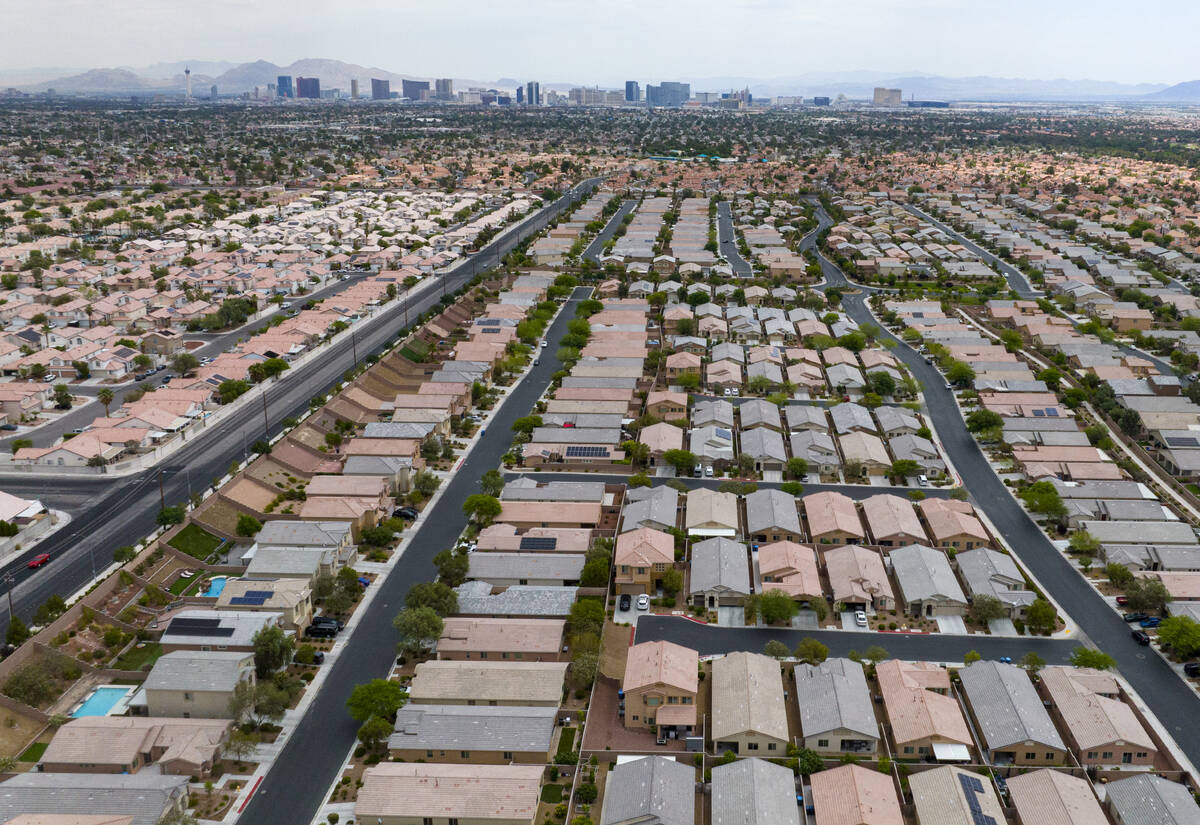Las Vegas’ shortage of affordable housing now a top issue in valley
Access to land to build affordable housing is definitely a “challenge” for Nevada Hand, the state’s largest nonprofit affordable housing developer, but one of its top executives says serving a growing city remains a bigger challenge.
Las Vegas is getting hit by a perfect storm when it comes to its housing crisis, said Waldon Swenson, Nevada Hand’s vice president for corporate affairs. The federal government controls 88 percent of the land in Clark County, and real estate stakeholders on both the residential and commercial side have called for the Bureau of Land Management to release it in a more timely manner.
“I would say that access to land is a challenge,” said Swenson, “but it hasn’t stopped Nevada Hand from doing the work that we do. At the end of the day a lot of this comes down to supply and demand.”
Swenson noted that “thousands of people a month” move to Southern Nevada but the amount of new construction is not keeping up with the demand for “adequate, safe, affordable homes.”
Las Vegas finds itself in the middle of a housing crisis as a shortage in inventory has driven home prices up close to 50 percent over the past five years. A recent study found that Nevadans now need to make at least $111,557 a year to afford a monthly mortgage payment.
The issue has pushed its way to the top of the presidential election as a recent survey found that affordable housing is a top issue for Nevadans as they prepare to cast their ballots on Nov. 5.
According to the National Low Income Housing Coalition, Nevada is short approximately 78,218 renter households for extremely low income people, a number that has been growing steadily since the start of the Covid pandemic.
Swenson said Nevada Hand has more units under construction right now than at any other time in the organization’s history. However, it’s still got only 1,892 units under development and 483 under construction with an additional 496 units in the planning stage.
Still, Swenson said more needs to be done to solve this crisis.
“It’s a complicated subject, but from a land standpoint I would say the more land that’s available for development of all kinds, especially the development of housing, is naturally going to bring housing costs down.”
The public housing stigma
On top of all of this, said Swenson, is the age-old complaint of “not in my backyard,” or NIMBY, in which local residents protest affordable housing developments in their neighborhoods.
He said some residents believe affordable housing will bring an increase of crime to their community and diminish land values, two points that have been disproven in multiple case studies, including a 2022 study in Orange County that found affordable housing actually decreased crime in the area and increased property values.
Swenson said Nevada Hand is attempting to educate the public on a case-by-case basis, going door to door in many neighborhoods where developments are planned. Still, he said it is a challenge to help citizens overcome tightly held opinions about subsidized projects.
“So there is still that stigma with public housing,” he said. “A lot of economists who study housing and sociologists have found that it’s just a misconception led by stuff that has made its way into the news and some stuff that was sensationalized.”
Swenson said that federal financing via the Low Income Housing Tax Credit is the biggest driver for affordable housing and if that tap gets turned off or even slowed, the challenge would get exponentially bigger.
The tax credit, he said, “has created approximately 90 percent of the affordable housing we have in this country.”
The valley’s land crunch
A recent Nevada Governor’s Office of Economic Development study estimates that by 2030 Nevada will face a severe land shortage that will hamper economic development across a wide array of industries.
The situation is also acute in Southern Nevada. David Edelblute, a commercial property and development attorney with Howard & Howard, noted a study by Applied Analysis that found there are approximately 36,219 acres of privately owned land left in Southern Nevada that could be developed for either residential or commercial use.
With Clark County adding approximately 115 residents a day, Edelblute said this gives the valley about eight years before it runs out of that land.
“This all ties back to land,” he said. “There’s certainly a degree of red tape that if we could get the process on the public side to be faster, that would certainly help.”
Getting federal land nominated for auction and development is a “burdensome process,” added Edelblute.
He noted that approximately 70,000 acres of federal land was set aside for development in 1998 when the Southern Nevada Public Land Management Act was passed. Today about 27,000 of those acres are still available, meaning the BLM has released only 44,000 acres for development over the past 26 years, or about 1,700 acres a year.
“At that pace, we’re about 16 years before they release the rest of the land,” he said.
Contact Patrick Blennerhassett at pblennerhassett@reviewjournal.com.



















